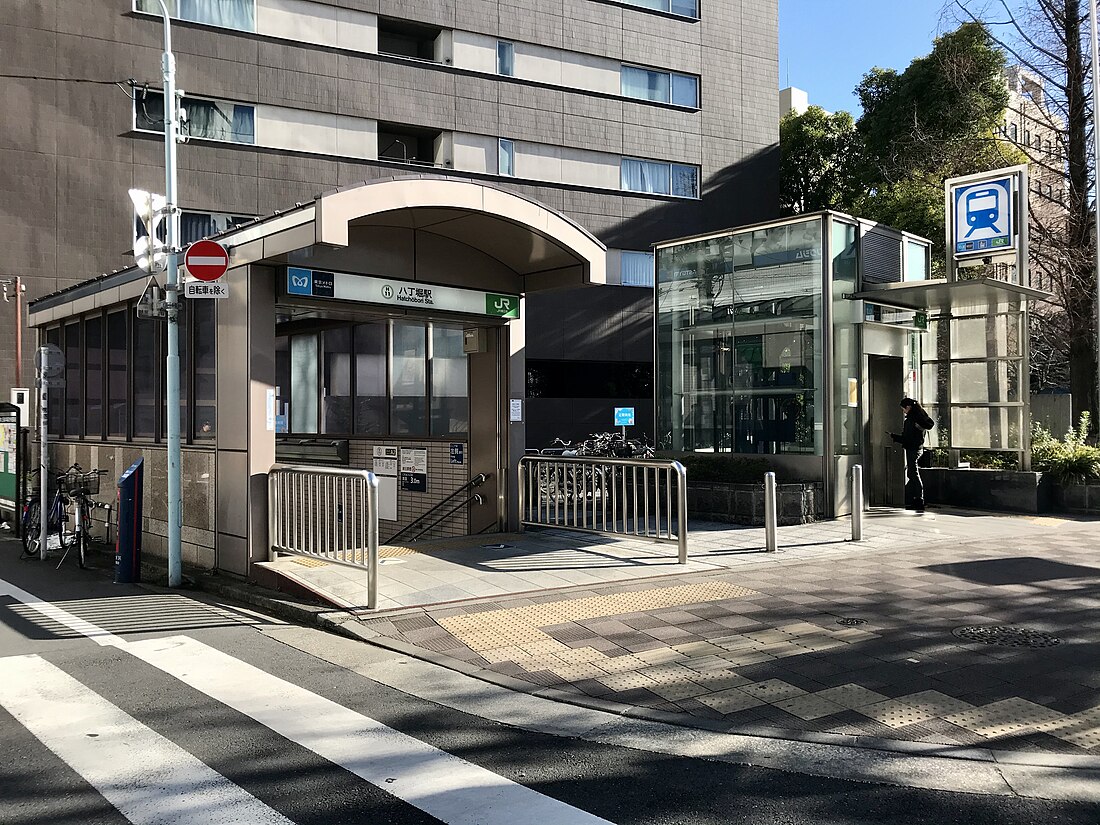Top Qs
Timeline
Chat
Perspective
Hatchōbori Station (Tokyo)
Railway and metro station in Tokyo, Japan From Wikipedia, the free encyclopedia
Remove ads
Hatchōbori Station (八丁堀駅, Hatchōbori-eki) is a railway station in Chūō, Tokyo, Japan, operated by both the Tokyo Metro and the East Japan Railway Company (JR East).
This article needs additional citations for verification. (May 2022) |
Remove ads
Lines
Hatchōbori Station is served by the Hibiya Line subway and the Keiyō Line from Tokyo to Soga. The station is also served by Musashino Line through-running services between Tokyo and Fuchūhommachi. It is located 9.7 km from the starting point of the Hibiya Line at Kita-Senju,[1] and 1.2 km from the western terminus of the Keiyō Line at Tokyo Station.[2]
Station layout
Hatchōbori Station consists of two individual stations run by different rail operators connected by underground passageways.
Tokyo Metro platforms
The Tokyo Metro station consists of an underground island platform serving two tracks.
| 1 | H Hibiya Line | for Ginza, Roppongi, and Naka-Meguro |
| 2 | H Hibiya Line | for Ueno and Kita-Senju TS Tobu Skytree Line for Tōbu-Dōbutsu-Kōen TN Tobu Nikko Line for Minami-Kurihashi |
- Tokyo Metro ticket gates
- Tokyo Metro platforms
JR East platforms
The JR East station also consists of an underground island platform serving two tracks. The JR line platform is deeper underground than the Hibiya Line platform.[2]
| 1 | JE Keiyō Line | for Maihama and Soga |
| JM Musashino Line through service | for Nishi-Funabashi and Fuchūhommachi | |
| 2 | JE Keiyō Line | for Tokyo |
- JR East ticket gates
- JR East platforms
Remove ads
History
The Tokyo Metro (formerly Eidan) station opened on 28 February 1963.[1] The JR East station opened on 10 March 1990.[2]
The station facilities of the Hibiya Line were inherited by Tokyo Metro after the privatization of the Teito Rapid Transit Authority (TRTA) in 2004.[3]
Station numbering was introduced to the JR East platforms in 2016 with Hatchobori being assigned station number JE02.[4][5]
Passenger statistics
In fiscal 2010, the JR East station was used by an average of 28,969 passengers daily (boarding passengers only).[6]
Surrounding area
The station is located in the Hatchōbori neighbourhood of Chūō, Tokyo.
See also
References
External links
Wikiwand - on
Seamless Wikipedia browsing. On steroids.
Remove ads








